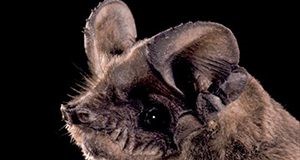Abstract
The Brazilian free-tailed bat lives throughout Florida and is the state’s most common bat. They are important economically because they consume large quantities of insect pests. This 3-page fact sheet explains how to differentiate Brazilian free-tailed bats from velvety free-tailed bats and Florida bonneted bats. Written by Holly K. Ober, Terry Doonan, and Emily Evans, and published by the UF Department of Wildlife Ecology and Conservation, November 2016.
WEC379/UW424: Florida's Bats: Brazilian Free-tailed Bat (ufl.edu)
References
Florida Fish and Wildlife Conservation Commission. Living with bats.
Marks, C. S., and G. E. Marks. Bats of Florida. 2006. University Press of Florida. Gainesville, Fl. 176 pp.
Ober, H. K., M. B. Main, and G. M. Allen. 2004. Bats of Florida. WEC186. Gainesville: University of Florida Institute of Food and Agricultural Sciences. http://edis.ifas.ufl.edu/UW203
Ober, H. K., and F. J. Mazzotti. 2008. Conservation of Bats in Florida. WEC247. Gainesville: University of Florida Institute of Food and Agricultural Sciences. http://edis.ifas.ufl.edu/UW291 https://doi.org/10.32473/edis-uw291-2008
Ober, H. K. 2008. Effective Bat Houses for Florida. WEC246. Gainesville: University of Florida Institute of Food and Agricultural Sciences. http://edis.ifas.ufl.edu/uw290. https://doi.org/10.32473/edis-uw290-2008
Ober, H. K. 2008. Insect Pest Management Services Provided by Bats. WEC245. Gainesville: University of Florida Institute of Food and Agricultural Sciences. http:/edis.ufl.edu/UW289 https://doi.org/10.32473/edis-uw289-2008
Wisely, S. M., and H. K. Ober. 2015. Facts about Wildlife Diseases: Rabies. WEC239. Gainesville: University of Florida Institute of Food and Agricultural Sciences. http:/edis.ufl.edu/UW282 https://doi.org/10.32473/edis-uw282-2015

